As the winter months start to creep in, it’s important to make sure your RV is prepared for the cold. Without proper insulation and protection from the elements, you may find yourself shivering during your road trip instead of enjoying the great outdoors in comfort. But don’t worry, insulating an RV underbelly doesn’t have to be difficult! This blog post will provide step-by-step instructions on how to ensure your RV stays cozy and warm all season long! So, if you’re looking for a way to beat those chilly temperatures, read on and learn how to insulate an RV underbelly.
Table of Contents
Reasons to Insulate Your RV Underbelly
Insulating your RV underbelly has a variety of benefits. One of the most obvious reasons to insulate an RV is that it will help you stay more comfortable in extreme temperatures. The insulation can act as a barrier from heat and cold, providing stability in temperature within the interior of the RV. This in turn leads to less energy being spent on cooling or heating the RV, saving you money on energy bills.
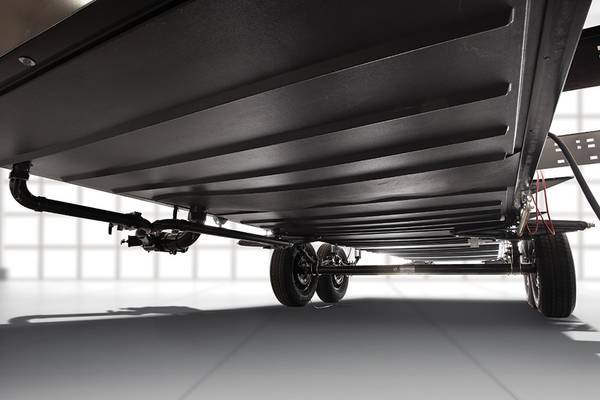
Insulating your RV also helps protect valuable electronic components from water damage which can occur due to condensation during cold weather. The insulation will act as a buffer, preventing moisture from collecting in certain areas of the RV and damaging any important electronics. It can even help reduce road noise while traveling, making for a more pleasant and quieter trip.
Finally, insulation is also beneficial in that it can improve the resale value of your RV by providing additional protection from the elements. An insulated RV will be more attractive to potential buyers, making it easier to sell or trade-in when the time comes.
Overall, insulating your RV underbelly can provide a number of advantages, making it a worthwhile investment for RV owners. Not only will you be more comfortable when traveling in extreme temperatures, but you’ll also save money on energy costs and protect your electronics and valuable components from water damage [1].
What Type of Insulation Is Best for Your RV Underbelly?
Foam Board Insulation
Foam board insulation is a popular option for RV underbelly insulation, as it’s lightweight and easy to install. This type of insulation can be cut to fit the area you’re insulating, providing good coverage with minimal hassle. Foam board also helps reduce noise and drafts from entering your RV, making it a great choice for anyone looking for a comfortable traveling experience. It’s also a great way to reduce the amount of energy your RV uses, as it’s more efficient than other types of insulation.
Spray Foam Insulation
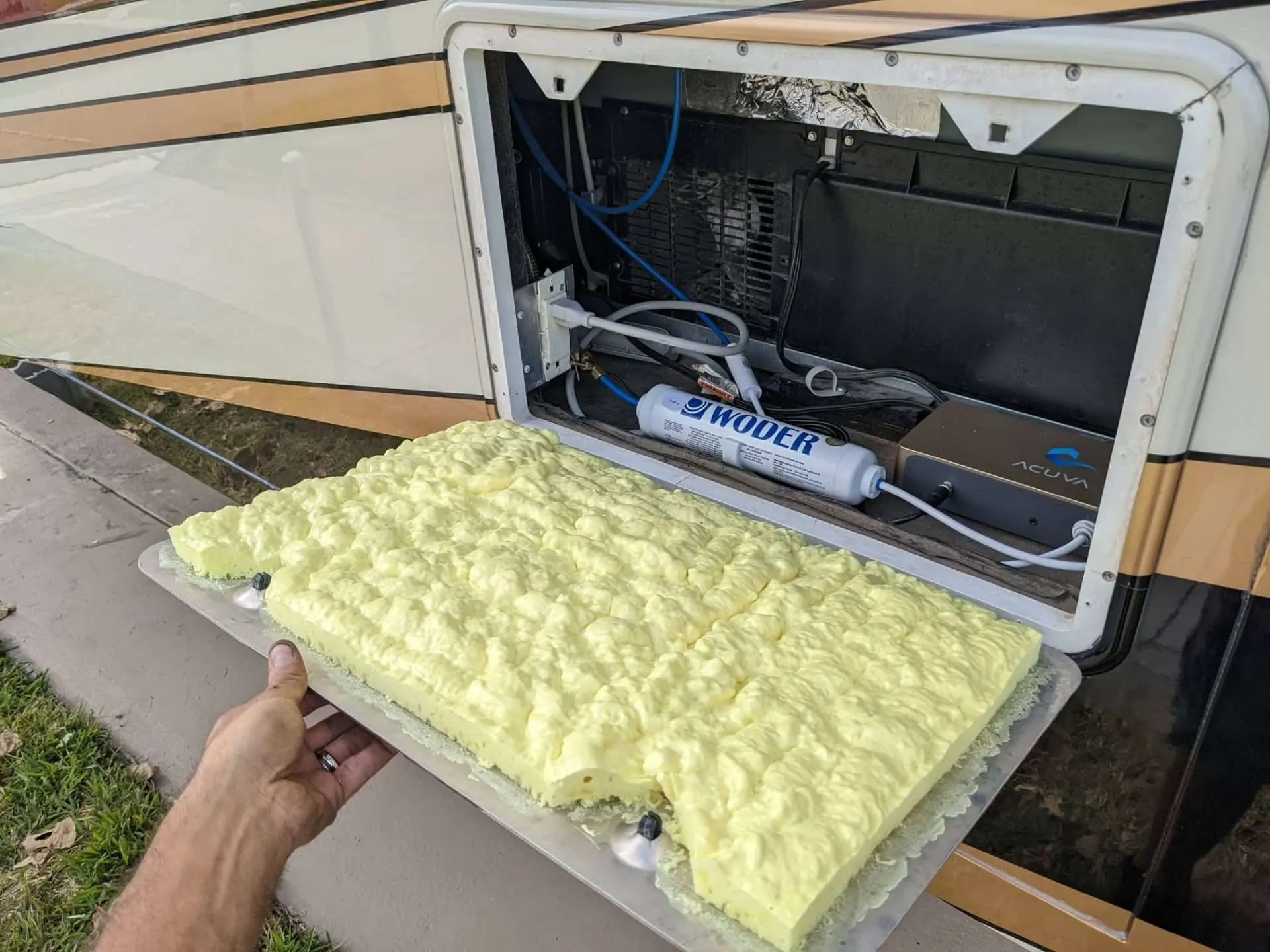
For those looking for an even more effective solution, spray foam insulation can be a great option. Spray foam is designed to create an airtight seal between your RV and the outside environment, helping to keep in conditioned air and preventing drafts or moisture from entering. It also helps improve energy efficiency by providing an extra layer of insulation that can help reduce energy costs. However, spray foam insulation can be more expensive than other options, though the added benefits may be worth it for some RV owners.
Reflective Insulation
Reflective insulation is often used in RV underbellies to help reduce heat transfer. By reflecting the sun’s rays away from your RV, reflective insulation helps keep your RV cool and comfortable even during hot summer days. It’s also lightweight and easy to install, making it an ideal choice for those looking for a cost effective solution that won’t take up too much space.
Rigid Insulation
Rigid insulation is a great choice for RV owners looking to add an extra layer of protection against the elements. Rigid insulation is typically made of foam or plastic and comes in several different forms, allowing you to customize your insulation solution based on your specific needs. This type of insulation provides excellent coverage and helps keep your RV warm in the winter and cool in the summer. However, it can be more difficult to install than other types of insulation, so make sure to seek out professional help if you’re not confident in your ability to install it correctly.
Fiberglass and mineral wool insulation
Fiberglass and mineral wool insulation are two of the most common types of insulation used in RV underbellies. Fiberglass is lightweight and relatively easy to install, while mineral wool provides excellent coverage and helps keep heat transfer to a minimum. Both types are good at reducing noise and helping keep your RV comfortable no matter what the weather brings. However, fiberglass can be itchy and difficult to work with, so make sure you wear gloves when handling it. Mineral wool can also be more expensive than other types of insulation, so consider your budget before making a purchase [3].
Choosing the Right Insulation for Your RV Underbelly
Insulation plays a key role in keeping your RV underbelly comfortable and energy efficient. When selecting insulation for the underside of your RV, you’ll need to consider factors such as R-value, material type, and cost.

R-value is a measure of insulation’s ability to resist heat flow and is important for determining how well it will keep the air inside your RV warm or cool. Most materials used in RV underbelly insulation range from R-2 to R-9, with higher numbers indicating greater resistance to heat flow. Fiberglass and mineral wool are the most common types of insulation used for RV underbellies, though spray foam is becoming increasingly popular due to its superior insulating and soundproofing qualities.
In terms of cost, fiberglass and mineral wool are typically the most affordable options while spray foam is more expensive. However, since spray foam provides superior insulation as well as soundproofing benefits, it may be worth the extra expense. In addition to selecting the right insulation for your RV underbelly, you should also make sure that all seams and joints are properly sealed to ensure maximum energy efficiency.
When installing insulation for your RV underbelly, it’s important to wear protective clothing and a respirator as some materials can be harmful if inhaled. If you’re not comfortable doing this yourself, there are experienced professionals who specialize in RV insulation installation. By taking the time to choose the right insulation and have it installed properly, you can enjoy a more comfortable and energy efficient RV for many years to come.
Steps for Insulating Foam Panel RV Underbelly Installation
Step 1. Measure RV Underframe for Size and Depth
Measure the area that needs insulation and determine the size and depth of the foam panels you will need. Make sure to round up to account for any cutting necessary. On average an RV underframe may need a 4-inch thick foam panel.
Step 2. Disconnect Wires or Pipes from the Underside of the RV
To ensure safety, disconnect any wires or pipes that may be connected to the underside of your RV. This will prevent any damage to these components while you are working on the insulation process.
Step 3. Prepare the Area
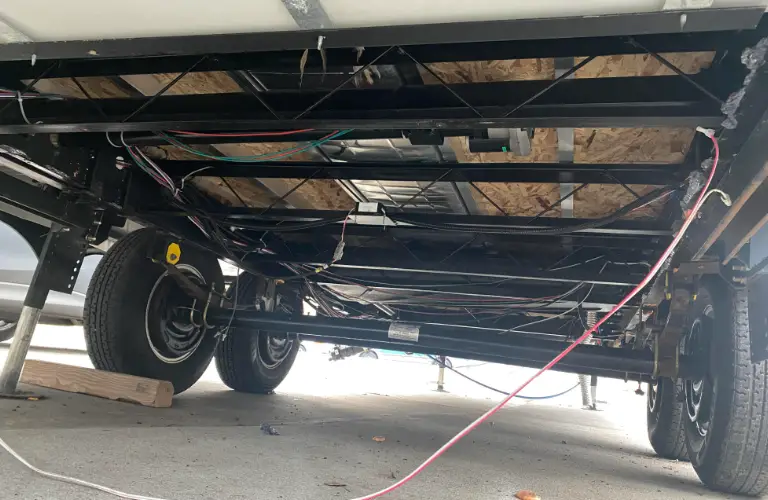
Make sure to clean the area well of any debris and dirt before continuing with installation. As you prepare, cover the areas around where you will be installing with a tarp or plastic sheeting for protection against overspray from adhesives.
Step 4. Cut and Attach Foam Insulation Panels to RV Underbelly
Lay the foam panels out on a flat surface and trace the size and shape of the RV underframe. Use a jigsaw to cut out the panels. Once you have all your pieces, apply adhesive to the back of each panel and secure them in place on the underside of your RV.
Step 5. Seal Around Edges with Caulk
Using a quality caulk, run a bead along the edges of each foam panel to ensure a complete seal and avoid any potential air leaks. Allow the caulk to dry before moving on to the next step.
Step 6. Apply Protective Coating or Paint
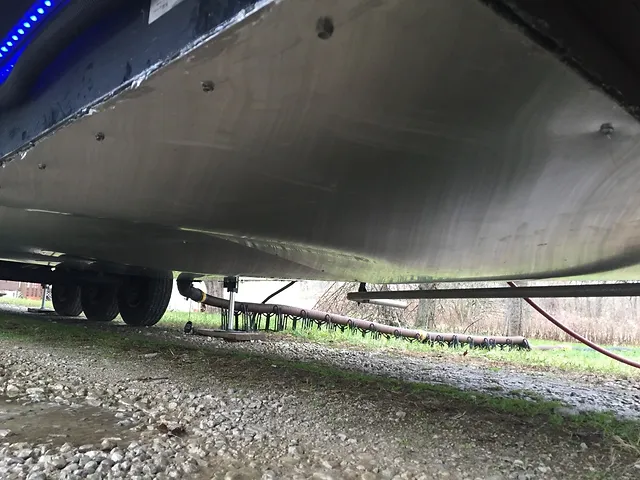
Once everything is in place, apply a protective coating or paint over the entire surface of the foam insulation panels. This will help keep them in good condition and extend their life. Allow the coating or paint to dry completely before using your RV again.
Step 7. Reattach and Protect Wires and Pipes
Reattach any wires or pipes that were disconnected in Step 2 and cover them with protective material. This will help protect the components from damage caused by weathering, water, debris, and other factors.
Step 8. Test for Air Leaks
Once everything is in place, test for air leaks around the edges of the foam panels to make sure they are sealed properly. If you find any, apply additional caulk to fill in the gaps and seal the area. This will help ensure that your RV is properly insulated and free from air leaks [3].
How to Apply Spray Foam Insulation on RV Underbelly
Spray foam insulation is an effective way to keep your RV warm and comfortable in cold weather, while also protecting it from moisture. To properly apply spray foam insulation on the underbelly of an RV, you will need the following supplies:
- Spray Foam Insulation kit
- Protective Eyewear
- Mask and Gloves
- Drop cloth
- Ladder
- Wide putty knife or other scraping tool
Once you have all of the supplies, start by preparing the surface. Make sure that the RV underbelly is clean and free of any dirt or debris. Use a wide putty knife to scrape off any rust or loose paint, then use a vacuum cleaner to remove any dirt or dust.
Next, you will need to apply the insulation. Begin by shaking the canister of spray foam according to the directions on the label. Place your ladder in a safe location and start spraying the foam around the edges of your RV underbelly. Move steadily across in one direction until you have completely covered the entire underbelly with an even layer of foam.
Spray foam insulation is an easy and effective way to insulate your RV’s underbelly. By following the steps above, you can keep your RV warm and protective in even the coldest temperatures. With regular maintenance, spray foam insulation will help keep your RV safe and comfortable for years to come.
It is important to remember that when applying spray foam insulation, it is essential to follow the directions on the label and use the proper safety equipment. Make sure you wear protective eyewear, gloves, and a mask when applying spray foam insulation to avoid any potential health risks. Additionally, it is important to keep children and pets away from the area during application and allow adequate time for the foam to dry completely before using your RV.
Alternative Methods to Insulate Your RV Underbelly
In addition to using the foam board insulation and R-15 batting, there are several alternative methods you can use to insulate your RV underbelly. For example, spray foam insulation is a great option for those looking for an easy-to-install way to insulate their RV underbelly. Spray foam insulation is durable and waterproof, making it a great option for RVers. Additionally, fiberglass insulation is another popular choice amongst RVers, as it’s lightweight and easy to install.
Finally, you could also consider using reflective insulation materials like bubble wrap or mylar blankets, which are designed to reflect heat away from the inside of your vehicle. Whichever method you choose for insulating your RV underbelly, make sure you seal all seams and edges with tape or caulk to ensure it is completely airtight. By taking the time to insulate your RV underbelly properly, you can enjoy a more comfortable and energy efficient journey.
Another great way to keep your RV cool in the summertime is by adding an additional layer of insulation such as reflective foil insulation. This type of insulation can be installed in the walls, floors and ceilings of your RV for maximum cooling protection.
Finally, it is important to keep your RV well ventilated. Proper air circulation will help prevent moisture build up and ensure that your RV stays cool in the summertime. Be sure to open windows and vents, or consider installing a roof vent cover to keep out the sun’s heat while still allowing fresh air to circulate throughout the vehicle.
FAQ
What kind of insulation do you use for an RV underbelly most often?
The most common type of insulation used for an RV underbelly is closed-cell spray foam. This type of insulation is highly efficient, expanding to provide a seamless barrier against air and moisture leaks. It also helps prevent condensation from forming on the underside of the RV and helps reduce road noise and vibration while driving.
What are some tips to ensure that insulation is installed properly?
When it comes to installing RV underbelly insulation, the most important thing is to follow the manufacturer’s instructions closely. It’s also important to make sure you measure the area accurately before purchasing materials and starting the installation process. Additionally, it may be beneficial to use a spray foam gun or roller for large areas rather than attempting to spread the insulation by hand. Making sure that all seams and gaps are properly sealed is essential for an effective installation. Finally, be sure to check your work for any damage or air leaks that may have occurred during the installation process.
How often should RV underbelly insulation be checked?
RV underbelly insulation should be checked periodically for signs of damage or wear. If any noticeable problems are found, the insulation should be replaced as soon as possible. Additionally, if you notice that the RV is no longer performing in terms of temperature control or soundproofing, it may be time to inspect and replace the underbelly insulation. Finally, routine maintenance such as cleaning debris away from the RV’s underside can help prolong the life of the insulation.
Does RV underbelly insulation come in different thicknesses?
Yes, RV underbelly insulation is available in a variety of thicknesses to suit different needs. Generally speaking, thicker insulation provides better performance and can last longer than thinner options. When selecting an appropriate thickness for your RV’s underbelly, it’s important to consider factors such as climate, road conditions, and the size of the RV. Additionally, thicker insulation may require a longer installation process than thinner options.
What other types of insulation are available for RV underbellies?
In addition to closed-cell spray foam, there are a few other types of insulation that can be used for RV underbellies. These include rigid foam board insulation, reflective foil bubble wrap insulation, and fiberglass batt insulation. Each of these has its own benefits and drawbacks that should be taken into consideration before making a decision. Additionally, some of these types of insulation may require special installation techniques in order to ensure an effective installation.
Are there any other safety considerations when installing RV underbelly insulation?
It’s important to keep in mind that any type of insulation can be a fire hazard if not installed correctly. When working with spray foam or other flammable materials, it is essential to take proper safety precautions and use the right protective gear. Additionally, ensure that your work area is well ventilated so as not to inhale any of the fumes from the insulation. Finally, make sure that you follow all manufacturer instructions closely and have an understanding of any local building regulations related to RV underbelly insulation.
Are there any special maintenance considerations for RV underbelly insulation?
It is important to keep in mind that different types of insulation require different levels of maintenance. For instance, closed-cell spray foam insulation will generally require less maintenance than other types, as it is resistant to moisture and air leaks. On the other hand, reflective foil bubble wrap insulation may need to be replaced more frequently due to its tendency to degrade over time. Additionally, some types of insulation may require special cleaning techniques and products in order to maintain their effectiveness.
How do you heat the underside of an RV?
There are a few different ways to heat the underside of an RV. The most commonly used method is through electric heating pads or blankets, which can be placed directly underneath the RV and plugged into an electrical outlet. Some RVs also come with propane-powered hot water tanks that can be used to provide gentle heat to the underside of the vehicle. Additionally, some RV owners opt to install heated floor mats or heating panels for added warmth. Finally, it is possible to insulate the underside of the RV with reflective foil bubble wrap insulation in order to help retain heat more effectively.
What are the benefits of an insulated underbelly?
Insulating an RV’s underbelly can provide a number of benefits, including improved temperature control, reduced road noise and vibration, prevention of condensation formation on the underside of the RV, and improved energy efficiency. Additionally, properly installed insulation can help keep the RV’s interior warmer in winter and cooler in summer. Finally, an insulation system that is designed specifically for RVs can also help protect against air leaks and moisture buildup.
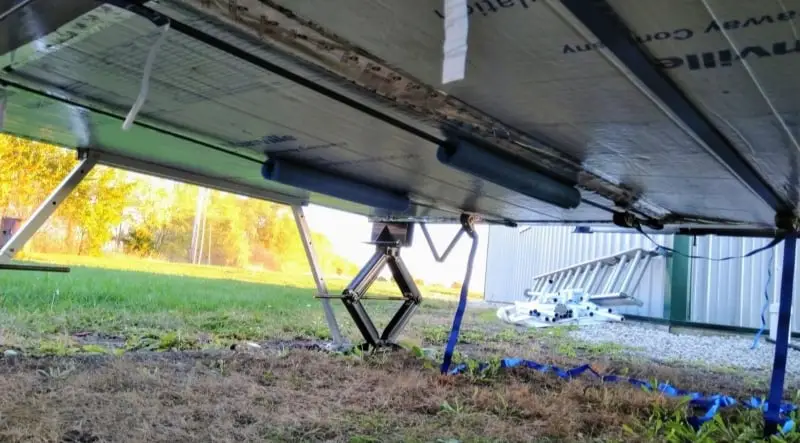
How do I cover my RV underbelly?
The most common way to cover an RV underbelly is with a tarp or weatherproof blanket. These can be secured using bungee cords or straps for added security. Additionally, some RV owners opt to install custom-fitted vinyl or plastic shields over the underbelly in order to protect it from road debris and other elements. Finally, when covering your RV’s underbelly, it is important to make sure the covering allows enough air flow in order to ensure proper ventilation. This can help prevent buildup of moisture and other damaging elements.
Do all RVs have underbelly insulation?
No, not all RVs come with underbelly insulation. Many older models may not have any insulation in place at all. Additionally, even newer models may only have partial or minimal insulation installed. If you are looking to improve energy efficiency and temperature control in your RV, it is recommended that you install an appropriate type of insulation beneath the vehicle. This can help keep the RV cooler in summer and warmer in winter, as well as providing a variety of other benefits.
What is the best way to install RV underbelly insulation?
The best way to install RV underbelly insulation will depend on the type of insulation being used. Generally speaking, it is recommended that you hire a professional to perform the installation in order to ensure that it is done correctly. This can help prevent any potential damage to the vehicle as well as ensuring an effective insulation system. Additionally, if you are installing a custom-fitted underbelly cover, make sure that it is properly secured with either bungee cords or straps. This will help keep the cover from being torn away by wind or road debris.
Useful Video: RV trailer – Installing Underbelly Protection (Part 1)
Conclusion Paragraph
If you want to insulate an RV underbelly, you should first consider what type of insulation is best for your specific needs. Different types of insulation will provide varying levels of energy efficiency and may require different installation techniques. Once the appropriate material is chosen, it is important to ensure that the RV underbelly insulation is installed correctly to help keep out heat or cold and improve overall comfort inside the vehicle. With a little research and care, you should be able to find the right insulation solution for your RV underbelly.
References:
- https://rvtroop.com/how-to-insulate-an-rv-underbelly
- https://rvwheelz.com/how-to-insulate-rv-underbelly/
- https://campertrailerreport.com/how-to-insulate-an-rv-underbelly/

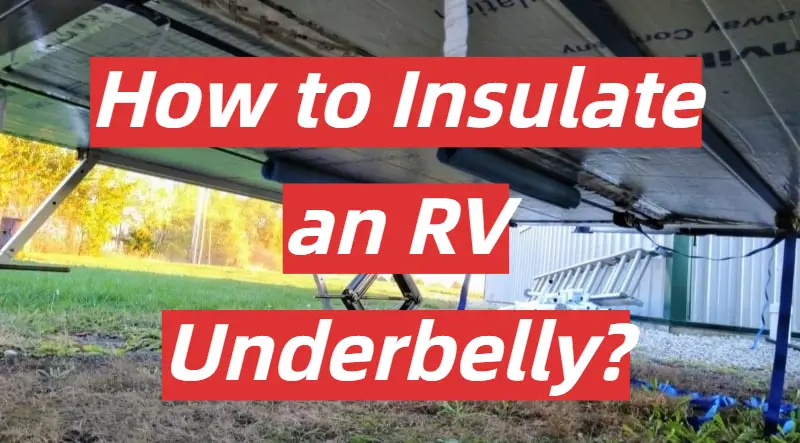
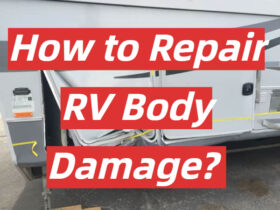
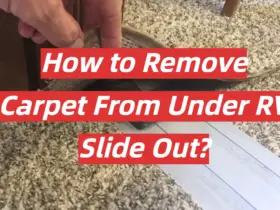
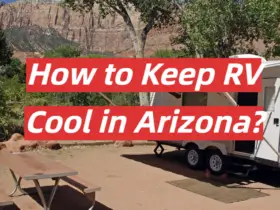
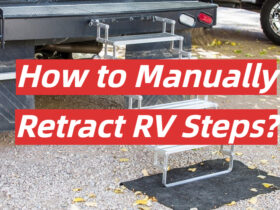
Leave a Reply